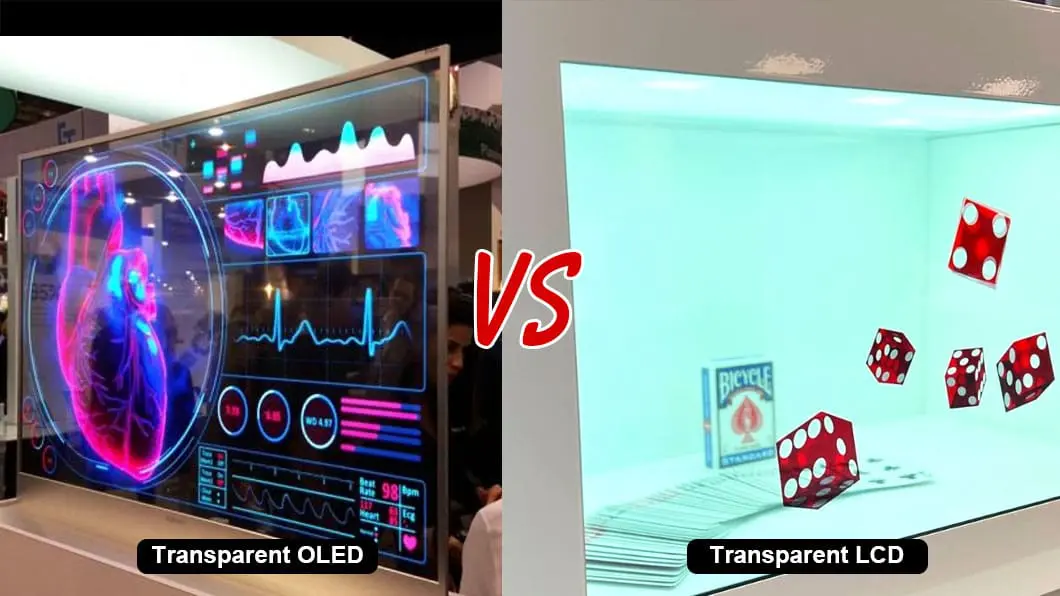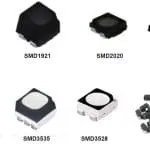In the world of display technology, transparent displays have garnered attention for their innovative use in various applications, from advertising to automotive displays. Transparent OLED (Organic Light Emitting Diode) and transparent LCD (Liquid Crystal Display) are two prominent technologies that allow for clear visuals while maintaining transparency. Although both have their merits, they differ significantly in their structure, functionality, and potential applications. Let’s dive into the key differences between transparent OLED and transparent LCD.

1. Technology Behind the Display
Transparent OLED:
OLED displays are based on organic materials that emit light when an electric current passes through them. In transparent OLED displays, the individual OLED pixels are made using thin, flexible materials, and they emit their own light, eliminating the need for a backlight. This self-illuminating feature allows the display to be transparent, as there is no need for the bulky layers required in other types of displays.
Transparent LCD:
In contrast, LCDs use liquid crystals that manipulate light to create images. However, transparent LCD displays require a backlight to function, which makes the entire system less transparent. The display panel itself is made of a transparent material, but because of the backlight and the liquid crystal layer, it cannot achieve the same level of transparency as OLED displays.
2. Transparency Level
Transparent OLED:
OLED displays are known for their high transparency, often achieving transparency levels of up to 40% or more. Since OLED pixels emit their own light, the display’s transparency is not hindered by the need for a backlight or additional layers. The result is a clearer view of the background or object behind the screen when it’s not in use.
Transparent LCD:
Transparent LCDs have limited transparency due to the backlight system. Even though the panel itself is made from transparent materials, the presence of the backlight system reduces the transparency. Typically, transparent LCDs can achieve transparency levels between 10% and 20%, which means the background behind the screen is less visible when the display is turned off.
3. Svjetlina i kontrast
Transparent OLED:
Transparent OLED displays are capable of producing vibrant colors and high contrast levels due to their ability to emit light from individual pixels. This allows them to create deep blacks and bright colors without being influenced by external light sources. The contrast ratio is significantly better compared to transparent LCDs, making OLED a preferred choice for environments where visual quality is critical.
Transparent LCD:
Since transparent LCDs rely on a backlight, their contrast ratios are typically lower than those of OLED displays. The backlight can cause a loss of black levels, making dark scenes appear washed out. Additionally, the brightness is often dependent on the strength of the backlight, which may not match the vividness and clarity provided by OLEDs.
4. Potrošnja energije
Transparent OLED:
OLED displays are more energy-efficient than traditional LCDs because each pixel emits its own light. The power consumption of a transparent OLED display is lower than that of an LCD display, especially when displaying darker content. However, the power consumption can increase with brighter content, as more energy is required to illuminate the individual pixels.
Transparent LCD:
LCDs generally consume more power due to the need for a constant backlight, regardless of the content being displayed. Even when displaying black or dark content, the backlight remains on, which leads to higher power consumption compared to OLED technology.
5. Flexibility and Thickness
Transparent OLED:
OLED displays are inherently thinner and more flexible than LCDs. The thinness comes from the fact that OLEDs don’t require a backlight or additional layers for light manipulation. Additionally, transparent OLEDs are often flexible, making them ideal for applications like curved or bendable displays.
Transparent LCD:
Transparent LCDs are typically thicker and less flexible because they rely on additional components, such as a backlight and polarizing filters. These extra layers add bulk to the display, which limits their use in applications where thinness and flexibility are essential.
6. Primjene
Transparent OLED:
Due to their superior contrast, brightness, and flexibility, transparent OLEDs are gaining popularity in cutting-edge applications like augmented reality (AR) glasses, transparent TV screens, and advanced retail advertising displays. Their ability to produce high-quality visuals with minimal interference from external light makes them ideal for environments where clarity is critical.
Transparent LCD:
Transparent LCDs are often used in applications where lower transparency is acceptable, such as digital signage, public transportation displays, and point-of-sale systems. While they don’t offer the same high-quality visual experience as OLEDs, they can still be effective in scenarios where power efficiency and cost-effectiveness are prioritized over visual quality.
7. Trošak
Transparent OLED:
Currently, transparent OLED displays are more expensive to produce than transparent LCDs. The technology is still relatively new and involves complex production processes, which contribute to the higher cost. However, as the technology matures, the price is expected to decrease over time.
Transparent LCD:
Transparent LCDs are more affordable compared to OLEDs due to the longer-established technology and simpler production processes. While they may not offer the same level of visual quality, they provide a cost-effective solution for applications that don’t require the best transparency or image quality.
In summary, the choice between transparent OLED and transparent LCD depends largely on the intended application and the specific requirements of the display. Transparent OLEDs excel in providing vibrant colors, high contrast, and excellent transparency, making them ideal for advanced, high-quality applications. Transparent LCDs, on the other hand, offer a more affordable solution with lower transparency and lower visual performance but are still suitable for less demanding uses. As technology continues to evolve, both transparent OLED and transparent LCD displays will play important roles in shaping the future of transparent display technology.













